Last Updated on April 3, 2024
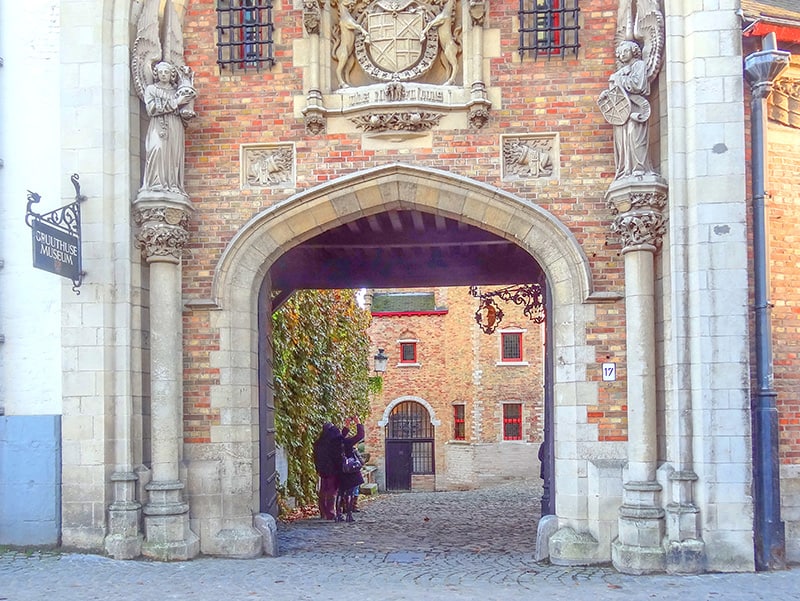
By Jim Ferri
Bruges is beautiful. A feast-for-the-eyes beautiful.
In fact, it’s one of the most beautiful cities in Europe. After all, what’s not to like about a city that boasts historic architecture, picturesque canals, incredible art, and a fascinating history? In addition, Bruges is also renowned for excellent food, great beer, and over-the-top chocolates…the latter in a country famous for chocolate.
The bottom line is that it’s the kind of place you’ll visit for a day and want to stay for two. Visit for two, and you’ll want to remain for a week. Seriously.
You’ll find plenty of things to do in Bruges at any time of the year.
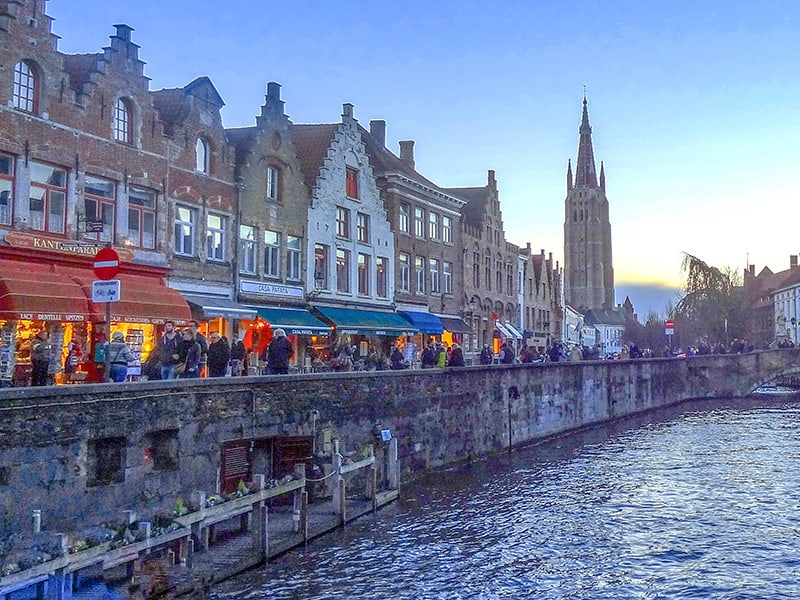
A (Very) Condensed History of Bruges
Bruges’ history can be traced back to the Roman Empire when a small Roman settlement was just outside today’s city center. The Romans were later driven out by Germanic tribes, which were replaced by the Counts of Flanders in the Middle Ages. In the 9th century, a fortress was built in present-day Bruges to defend against the Vikings.
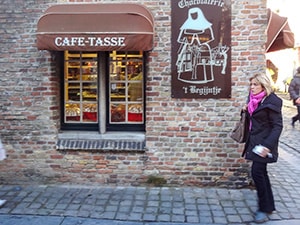
Bruges then began evolving into an international trading center in the early Middle Ages and was the center of the cloth trade in the 13th-15th centuries. That’s when the city’s merchants lavished their wealth on their mansions, civic buildings, and churches. In fact, the city’s buildings were so beautiful that they were the sensation of northern Europe at the time.
Over the centuries, however, the importance of Bruges as a trade center declined and the Industrial Revolution bypassed it.
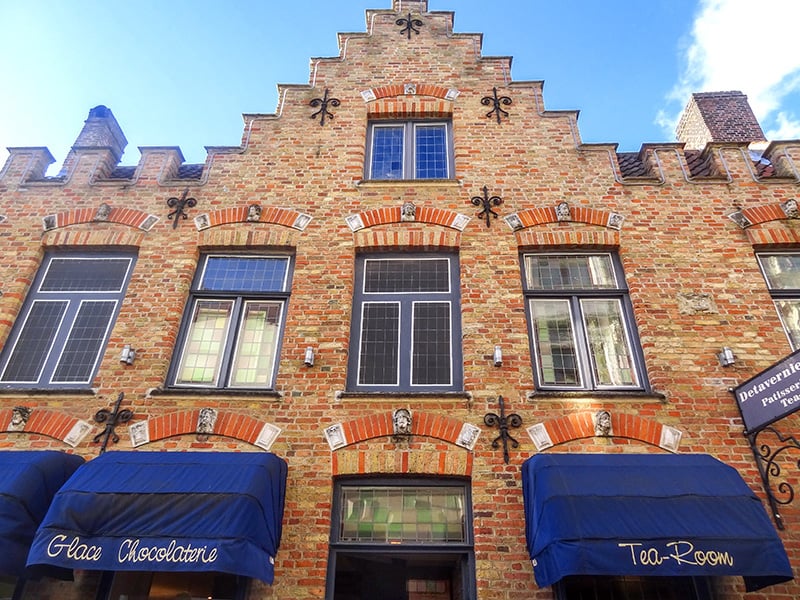
Ancient Beauty
Luckily, the city has retained its ancient beauty. Today, it is full of architectural and artistic treasures and numerous shops, boutiques, and fine restaurants. It’s an exceptionally photogenic city that’s a favorite with travelers and one of Belgium’s most popular tourist destinations.
Bruges’ a car-free historic center is a UNESCO World Heritage Site, and is chockablock with beautiful medieval buildings and other places of interest. It’s also relatively easy to navigate.
You can see it by foot (it is eminently walkable), by boat on its quiet canals, or via horse-drawn carriage. Each provides a slightly different perspective of this beautiful city.
The following top places in Bruges are sure to enhance your visit.
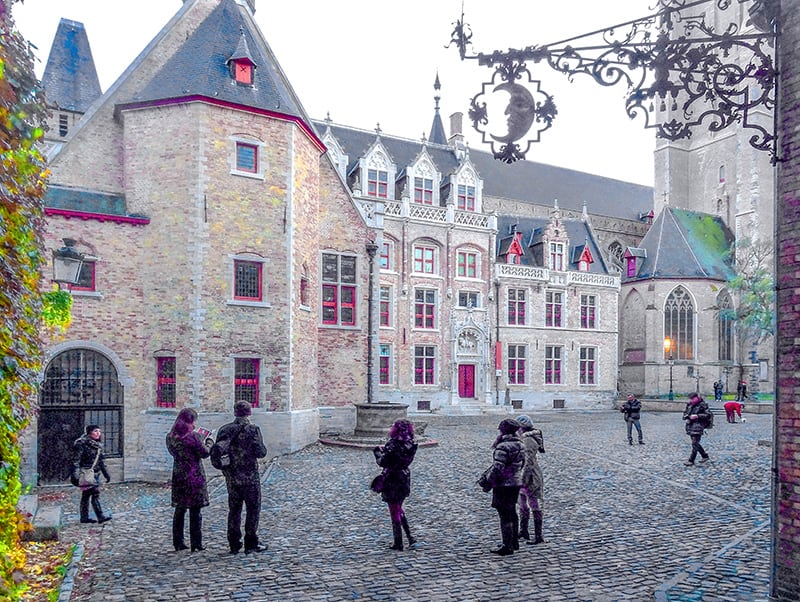
The Top Place to Visit in Bruges – the Historic Center
The historic center of medieval buildings is crisscrossed with old canals and cobblestone streets. It’s the classic area of the city that impresses most travelers – Old-World Belgium at its best. Walk about the Center, and you’ll feel you’ve stepped back in time.
The area’s restored buildings once housed merchants; today, they house coffee shops, cafes, art galleries, and boutiques. There are also museums and shops selling chocolates and lace and plenty of fine restaurants. It’s best to enjoy it with a map in your back pocket while wandering, letting each little street or lane draw you in.
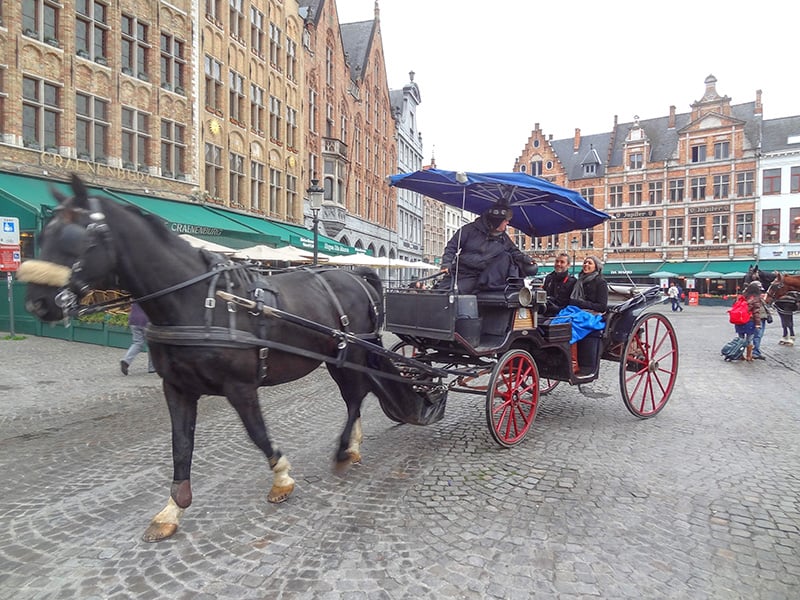
One of the Things to Do in Bruges: visit Markt Square
As Lonely Planet calls it, the “nerve center” of Bruges is a beautiful square that surrounds the statue of Jan Breydel and Pieter de Coninck, 14th-century local heroes who resisted French oppression.
Dominated by the imposing Belfry, the broad 13th-century market square covers an expanse of approximately 2.5 acres. It’s lined with medieval buildings and old guild houses with step-gabled facades. Many buildings are home to pubs and restaurants that tumble onto the square below.
It’s an excellent place to people-watch or hire a horse-drawn carriage.
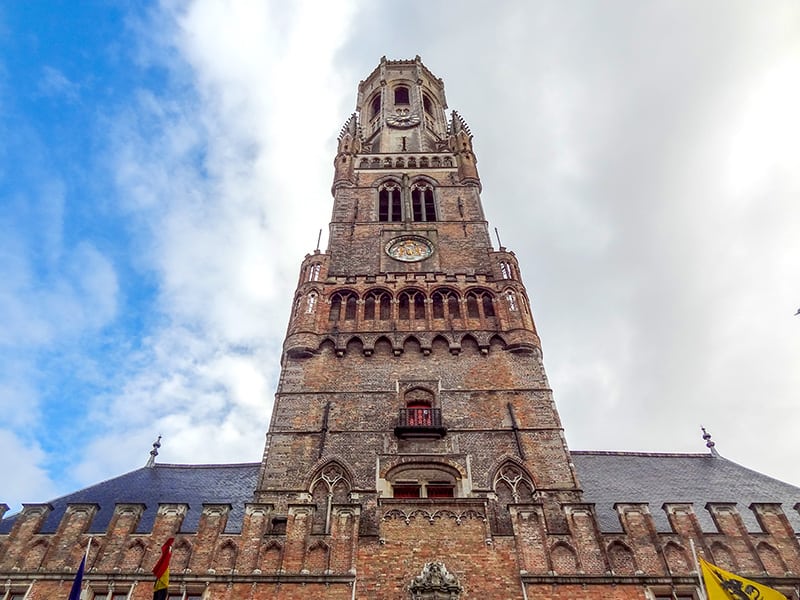
The Beautiful Belfry
The most imposing building on Markt Square is the 272-foot tall Belfry, which forms part of a 13th-century complex of halls that served as a warehouse and a market hall in the Middle Ages.
The tower contains a carillon with 47 bells and the old city Treasury that housed the city’s charter, seal, and public funds during the Middle Ages.
Those looking for a panoramic view of the city should head for the Treasury halfway up the 366-step climb to the top. It was once a lookout tower in case of war, fire, or other calamity in the Middle Ages. There’s an art gallery at the base of the building.
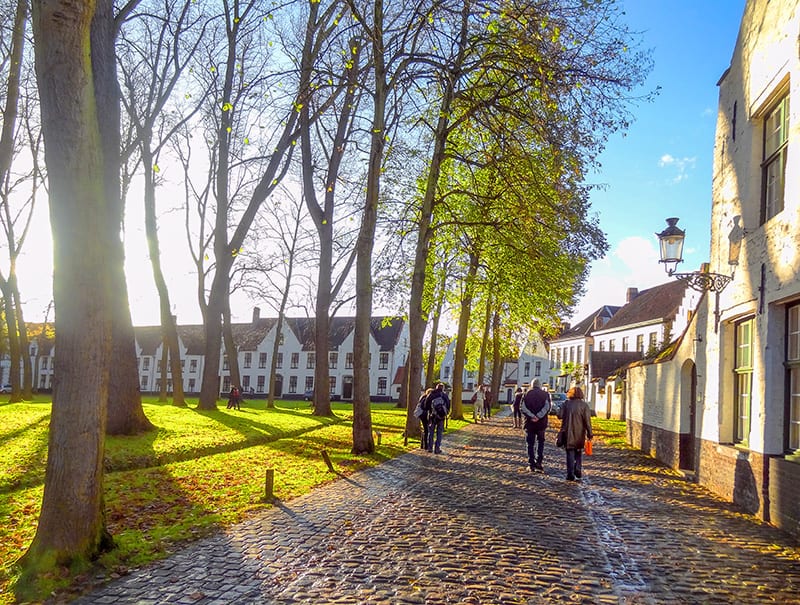
Another of the Things to Do in Bruges: Visit the Begijnhof
The Prinselijk Begijnhof ten Wijngaarde, “The Begijnhof,” is a ring of small white houses. They surround a central lawn in a park-like garden setting.
This serene place was once the home of Beguines, girls, and widows from various social backgrounds who devoted themselves to charitable work. Its birth dates back to 1245 under the Countess of Flanders, Margaretha of Constantinople.
Today, the Begijnhof is home to the Order of Saint Benedict sisters, who still wear the Beguine habit. The Sisters ask visitors to respect their vow of silence.
If you take a horse-and-carriage ride around Bruges, your driver will likely make a 10-minute stop here, long enough for you to cross the small entrance bridge for a quick look around.
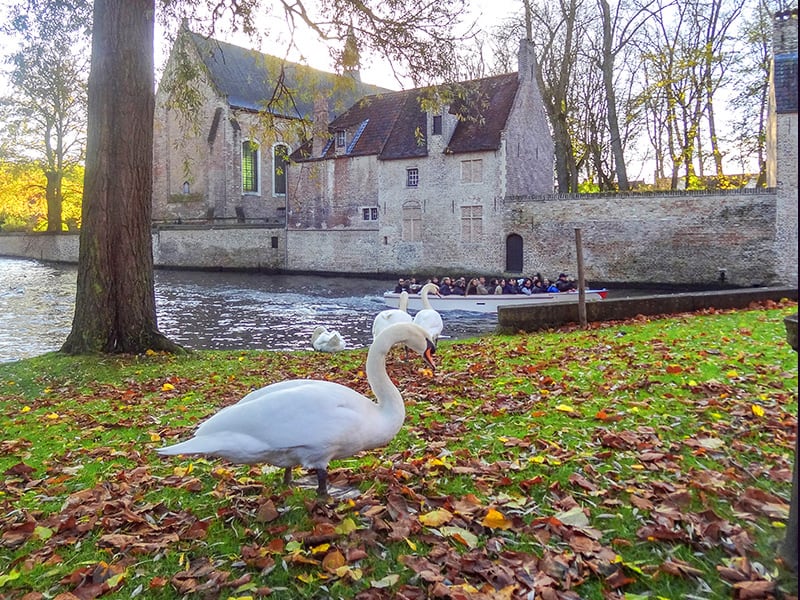
Minnewater
Minnewater is another of the beautiful places you’ll find in Bruges. It’s so named, according to local lore, because of the water nymphs (“minnen” in Dutch) which lived in the lake. You’ll find it adjacent to the Begijnhof.
It’s a romantic spot usually filled with beautiful swans and Instagrammers with their cell phones.
Exit on the east side of the Begijnhof, cross the small bridge to Wijngaardplein and enjoy some good views of Minnewater. On Wijngaardplein, you’ll find many horse-drawn carriages, restaurants, and cafes. Grab a beer or glass of wine and relax for a while.
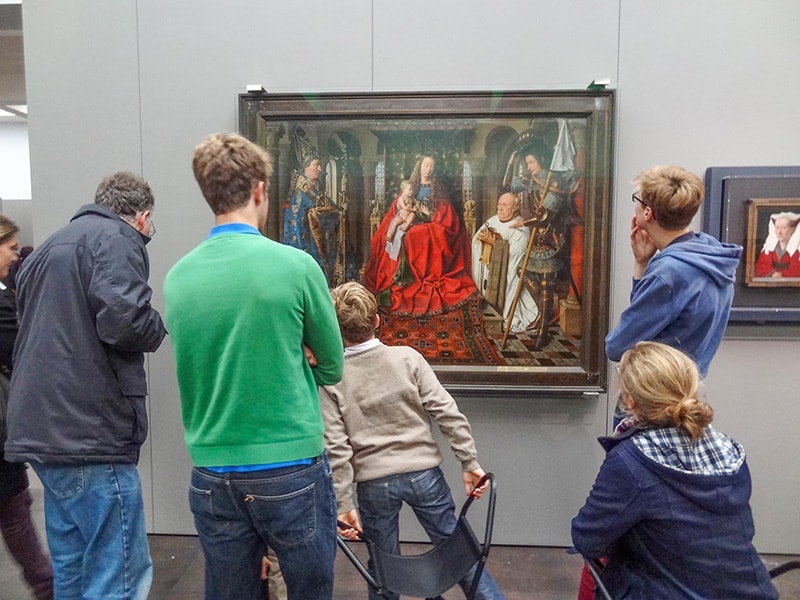
The Wonderful Groeninger Museum
If you visit the Groeningemuseum, Bruges’ renowned 11-room art gallery, you’ll realize that size always doesn’t matter.
Even though it’s not as large as numerous renowned art museums in Brussels and Antwerp, it’s a fantastic and celebrated museum that houses Belgium’s finest collection of works by the “Flemish Primitives,” which include Jan van Eyck, Hans Memling, Rogier van der Weyden, Hugo van der Goes, and Gerard David.
The Groeninge also contains top 18th– and 19th-century neoclassical pieces and masterpieces from Flemish Expressionism and post-war modern art. It comprises six centuries of Belgian visual arts in one location.
The nearby Gruuthusemuseum, just a 2-minute away, takes you through three critical periods in the history of Bruges. This includes the days of the Burgundians, Bruges artistically undiscovered 17th and 18th centuries, and the neo-Gothic city of today.
Musea Brugge Card
If you’re visiting museums and other sites in Brussels, you may want to purchase the Musea Brugge Card. It provides entry to 12 museums and historic sites throughout Bruges, including the Groeninge and Gruuthuse Museums.
Buy the card online, at the city’s tourist offices, or participating museums and sites. The cost is €33 for adults, €25 for those 18-25 years, and €17 for 13-17 year olds. Entry for children 12 years and younger is free.
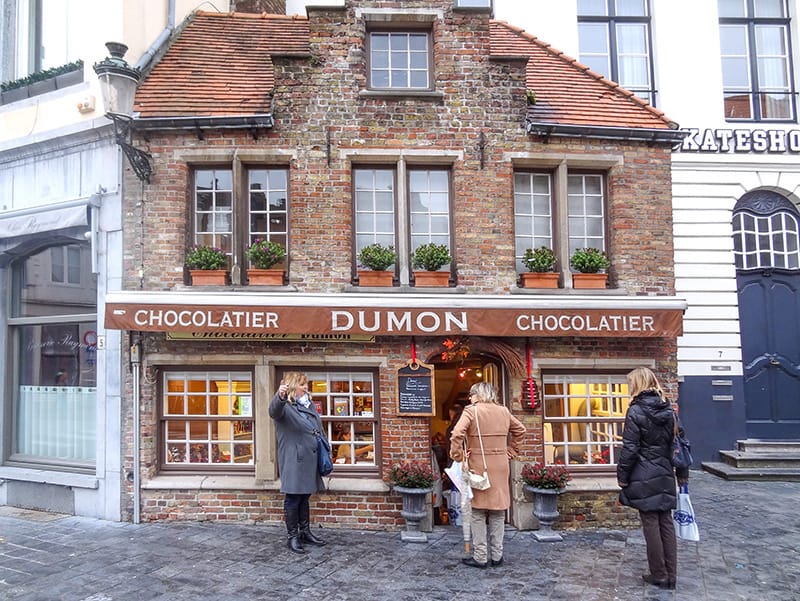
Chocolate, Chocolate, Chocolate!
Bruges is as famous for its chocolate as it is for its medieval art and architecture. In fact, you’ll never be more than a few steps away from a chocolate shop nearly anywhere in the old, historic center.
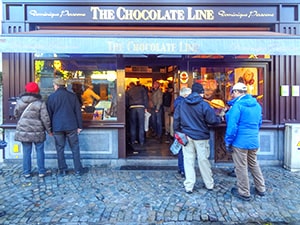
If you’re searching for the best, I’ve already done the work for you: see In Search of the Best Chocolate in Bruges, Belgium. It also includes a map to guide you to the best of the city’s chocolate shops.
My favorites are Dumon Artisanale Chocolatier (Eiermarkt 6) and Dominique Persoone (Simon Stevinplein 19). Still, you’ll likely find your own favorites. If you want to find out more about chocolate, visit the privately owned Chocolate Museum (Choco-Story, Wijnzakstraat 2), where you’ll find the answers to such questions as whether it causes high cholesterol, makes you fat, or is an aphrodisiac…
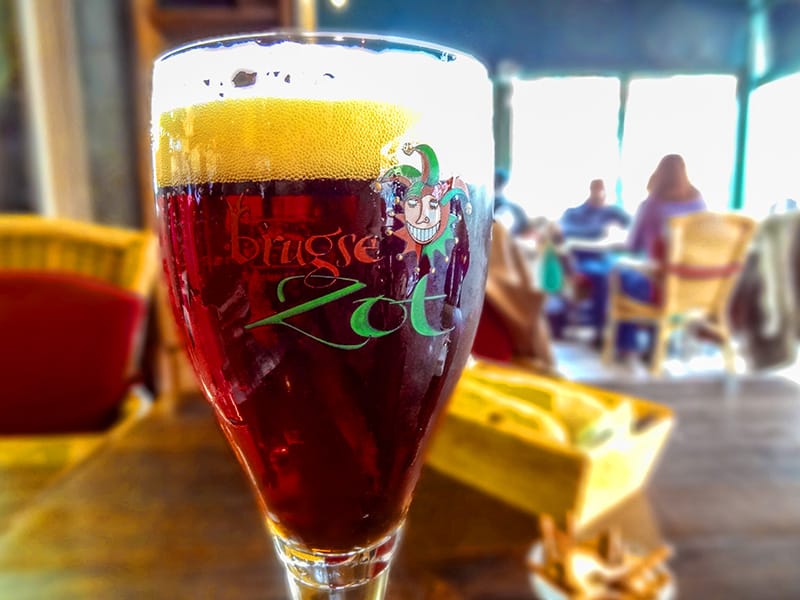
If You Enjoy Beer…
In addition to chocolate, the people of Bruges have always liked a glass or two of good beer. Unsurprisingly, the city boasts several locally brewed beers. In fact, right in the city center, you can visit the De Halve Maan and Bourgogne des Flandres breweries. And just outside the center is Fort Lapin, a craft brewery.
The Bruges Beer Experience will undoubtedly broaden your beer knowledge even more. It serves 16 different kinds of beer and has a great view of Market Square.
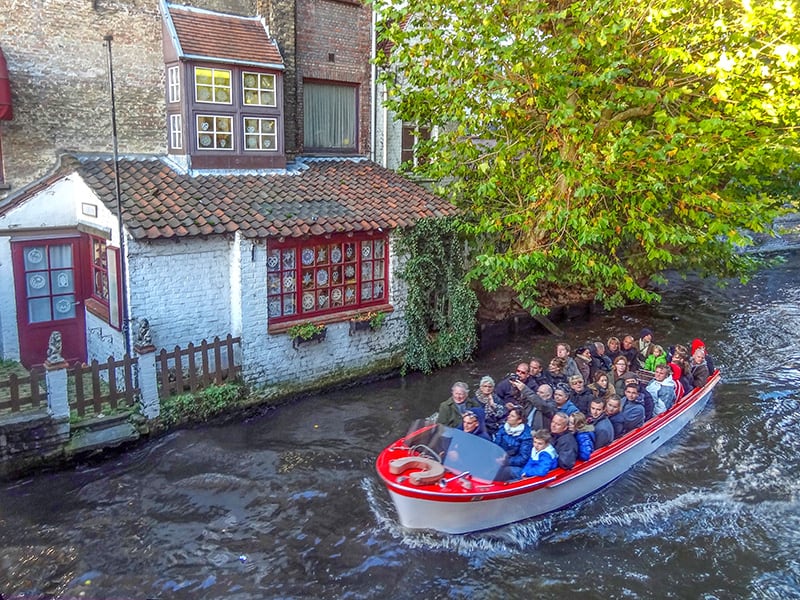
Take a Canal Tour
Yes, canal tours in any city are usually very touristy. But in Bruges, canals are an essential part of its history, providing a different feel to the town than walking about it.
Just be aware they can get hot on a hot summer day and quite chilly on a cold winter one. Still, they’re fun – just dress appropriately.
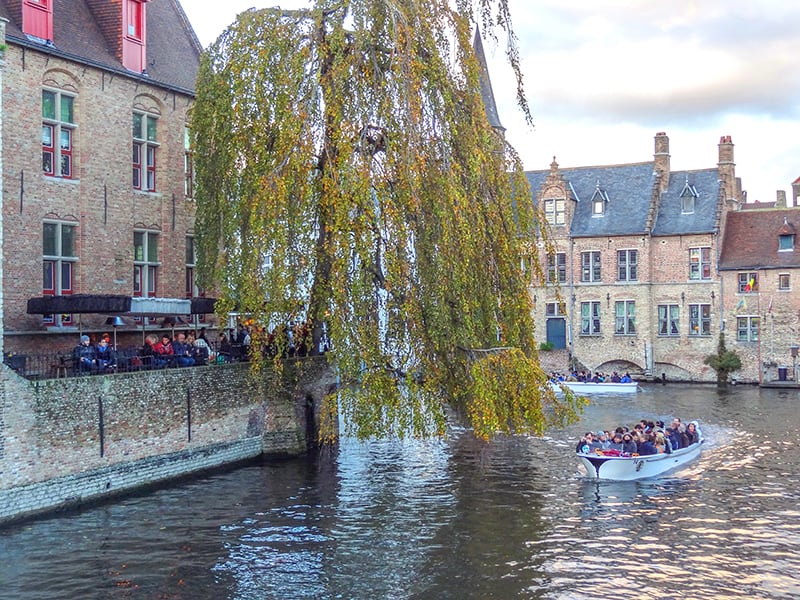
Rosary Quay
If Bruges is a photographer’s heaven, there’s no more heavenly spot for a photo than Rozenhoedkaai (Rosary Quay). It’s been so named for years since this was the spot where rosaries were sold. Today, however, it’s better known as the city’s most popular spot for photos.
The Quay is where the Dijver and Groenerei canals meet. The canal is wide here, and along its sides, you’ll find beautiful old buildings and a broad vista of water and sky. Whether you’re planning to post on Instagram or not, you’ll love the view.
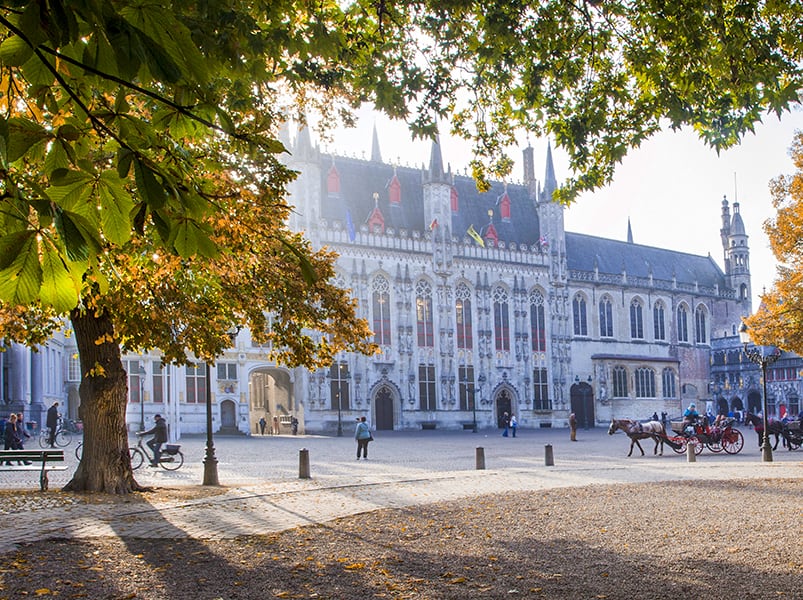
Burg Square
It’s often said that while Market Square is the heart of Bruges, Burg Square is its soul. For centuries, Bug Square has been the political center of the city. In fact, the city’s administrative offices are still in the 14th-century Town Hall.
The square is fascinating because the Town Hall is just one of several landmark buildings. The square was added to over the centuries, and each building reflects the architectural style of its age.
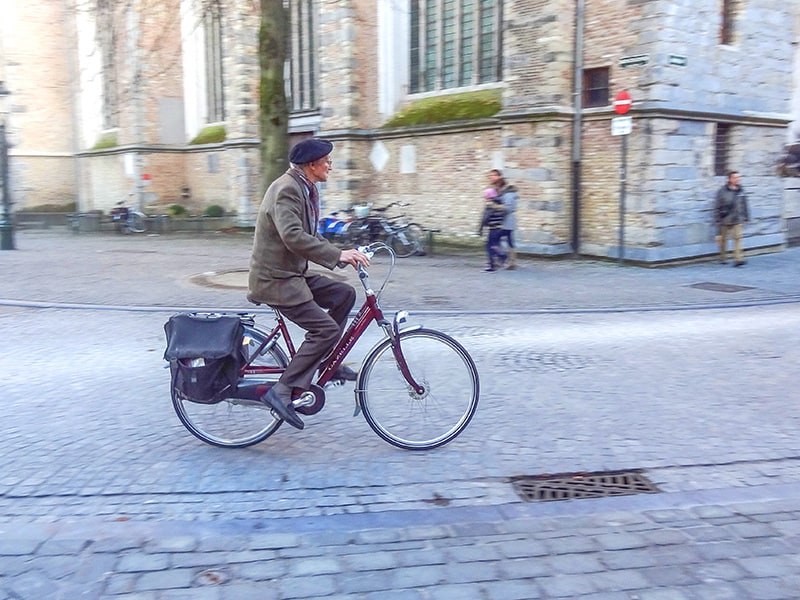
When To Visit Bruges
Bruges is worthwhile visiting any time of the year. But that can be said for many European cities since the crowds are gone in the off-season, and the prices are lower.
So, what makes Bruges unique? See the reasons in Why Bruges Is Better In the Off-Season.
How to Get to Bruges
If you’re headed to Bruges, the nearest airport is Brussels. It’s about one hour by train ($11-16), bus ($10-15), or car from the capitol.
If you’re also visiting Brussels (a city with great food!), Bruges is about one hour by train with a fare of $11-17. From Amsterdam, the trip will take you about 3½ hours via train with a fare of $61-120.
You may also enjoy An Awesome Brussels Food-Filled Weekend / Canal Holidays – Barging in Europe / 26 Great European Day Trips by Rail / Bus.
If you go:
Tourist Office for Flanders – Brussels
620 Eighth Ave – 44th Floor
New York, NY 10018
Tel: (212) 584-2336
http://www.visitflanders.us
[email protected]

Leave a Reply